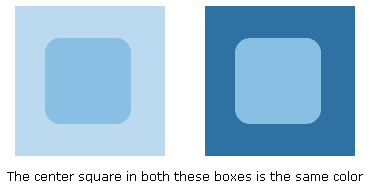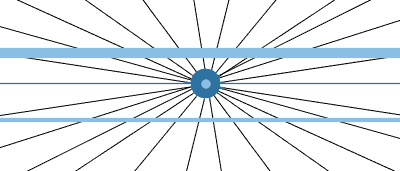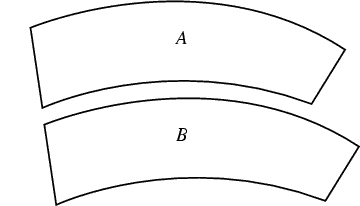Famous Optical Illusions
Here are some well know illusions, mostly named after the individual who discovered the phenomenology of the particular illusory effect:
The Chubb illusion is an optical illusion wherein the apparent brightness (luminosity) of an object varies dramatically, depending on the context of the presentation. For instance, a dark object surrounded by darker objects may appear brighter than an actually brighter object, surrounded by even brighter objects. This was observed and documented by Chubb and colleagues in 1989.

The Hering illusion is an optical illusion discovered by the German physiologist Ewald Hering in 1861. The two horizontal lines are both straight, but they look as if they were bowed outwards. The distortion is produced by the lined pattern on the background that simulates a perspective design, and creates a false impression of depth. Note that the thinner line appears more bowed than the thicker line.

The Jastrow illusion is an optical illusion discovered by the American psychologist Joseph Jastrow in 1889. In this illustration, the two figures are identical, although the lower one appears to be larger.

The Hermann grid illusion produces the illusion that there are gray spots or squares at the intersections of the streets or canals.

The Ebbinghaus illusion (named for its discoverer, Hermann Ebbinghaus) is an optical illusion of relative size perception. If two circles of identical size are placed near to each other and one is surrounded by large circles and the other is surrounded by small circles, the second central circle will appear smaller than the first central circle. Look up at the banner image for this website for an example of the Ebbinghaus illusion.